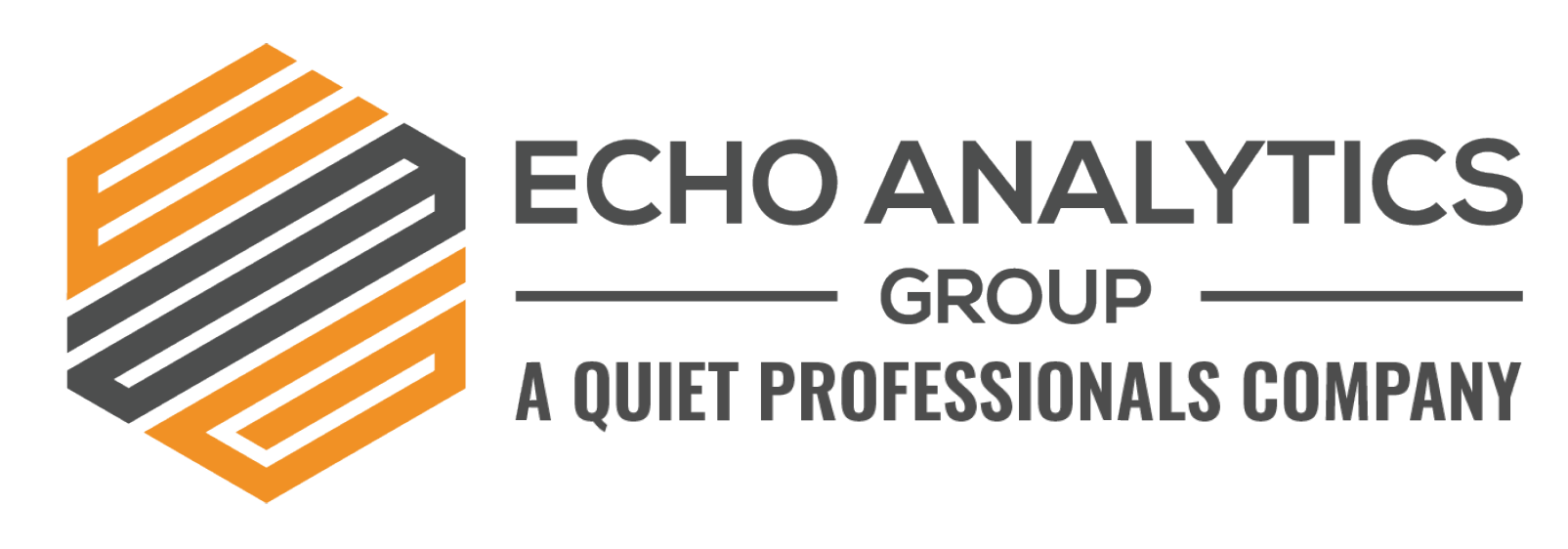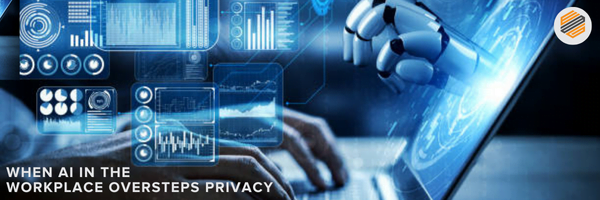
Artificial Intelligence (AI) has become a growing member of today’s workforce. Companies use AI to help improve customer service, energy consumption, and quality assurance. However, what happens when AI moves into a managerial role in how employees operate? How far are employers allowed to take AI before concerning themselves with employee rights, ethics, and labor laws?
In this issue of Overwatch, we work to highlight some of the ways big employers are using AI to manage their employees and what that means for their employees and their culture.
In a 2017 Google Talk, Frank Abagnale (the man on whom “Catch Me If You Can” was based) tells young analysts that the type of con he was able to perform 50 years ago is “4,000 times easier today” due to the growing availability of technology. Through publicly available information (PAI), criminals can quickly see what corporate signatures should be on financial transactions, what the format of those transactions looks like, and even where employees hang out after work to talk shop. Impersonating employees has never been easier. As Mr. Abagnale puts it, “you no longer need a printing press to make all four colors on an ID card that passes a quick visual inspection.”
Tesla is just one company that has taken this challenge head-on and started implementing several employee monitoring systems. What may have begun to protect the company against fraud has become a division of employee monitoring tools to help manage employees. Tesla was outed by CNBC back in 2017 for using a PR firm to monitor employee social media to counter employee unionization. Tesla’s recent activities include AI-powered presence patrols that notify employees when they haven’t swiped their badge at work enough to meet company standards. Overwatch analysts utilized a simple Google Dorking technique to search the TeamBlind.com website, a social media site for anonymous employee rants, to find several threads about how employees feel about such actions.

Our results are here.
The overall feeling from the anonymous employees who commented is that Tesla is justified in their actions, but the decision comes at a high cost to employee morale. Some even speculate that such activities are intentionally being used to assist with the ongoing downsizing the company is conducting in expectations of future economic limitations.
When it comes to ensuring safe work procedures are being implemented, AI has additional management roles to fulfill. For example, Amazon’s “Last Mile Safety” team has partnered with an “intelligent fleet safety” company called Netradyne to install AI-powered cameras in their delivery vehicles. According to Netradyne’s website, they are working to “transform the transportation ecosystem through Computer Vision and in-depth data analysis” powered by AI. This means that more than half of the Amazon delivery trucks you see are now equipped with an AI-powered camera system that monitors 270 degrees of visibility from the truck’s cab. This includes monitoring the drivers for safe driving behaviors. Last Mile Safety’s Sr. Manager, Karolina Haraldsdottir, explains what the system can do and how they work in an unlisted video shared with all driver teams.

Front view from Netradyne camera system.

Side views from Netradyne camera system

Driver view from Netradyne camera system
As you can see, this system is designed to use AI to enhance Amazon drivers’ safe driving skills. Videos are reviewed for driver improvement, tracking, and monitoring hazards and driving incidents. According to Haraldsdottir’s instructional video, the cameras will send reports back to Amazon if it detects any of the 16 pre-programmed signals that they deem unsafe. The system will also provide audio alerts to drivers when they run a stop sign, follow too close, speed, or the camera detects that they are distracted. These events are then used to give ratings of “poor,” “fair,” “good,” or “fantastic” to drivers. This may sound similar to those devices that insurance companies provide you to monitor the breaking and g-force of your car for safe driving but upgraded with an intelligent camera. Kudos to their PR team for not making the cameras red like the one from HAL 9000! “Sorry, Dave, you can’t merge into that lane….”
One of the most considerable drawbacks of this technology is that AI is limited by the flaws of the programmers who created its algorithms. As a result, AI can lack contextual awareness. For example, some drivers report losing points for following too closely when they get cut off. One such driver gave his anonymous story to help shed light and mentioned that his performance is now constantly monitored by an impartial system. He reports, “a car cuts me off to move into my lane, and the camera, in this really dystopian dark, robotic voice, shouts at me.” Think of an AI-powered back seat driver that never takes naps on the road, and they are in charge of your quarterly performance review.
Something that is less commonly known is that Amazon delivery drivers are not actually employees of the Seattle-based giant. Instead, Amazon utilizes sub-contractors through its Delivery Service Partners (DSP) program to fill these positions, thus protecting Amazon from immediate issues with the drivers as they implement their policies to the companies that serve these contracts.
In a 2021 Bloomberg report, it was noted that Amazon uses this relationship to dictate behaviors and activities of their drivers down to their grooming standards, appearance, body odor, and even their behaviors on and off the job. These standards are often monitored using the Netradyne monitoring systems. So how do employees protect themselves from these policies? The short answer is – they can’t. Every employee must sign consent agreements to keep the job. While this sounds like an infringement of the “legitimate expectations of privacy at work” listed in the Privacy Act of 1974 (recently updated in 2020), it is not. The privacy act focuses solely on what a Government Agency can do, and there are few rights given in the private sector outside of some State laws that protect individual privacy. However, at the state level, individual privacy is generally characterized as:
- Intrusion of solitude
- Appropriation of name or likeness
- Public disclosure of private facts
- False light
So it looks like Amazon’s cameras are here to stay despite many privacy activists telling news agencies such as Telegraph that they are “creepy, intrusive, and excessive.”
While there are many ways to monitor employee activity, incorporating an always-on camera and workstation monitoring systems can affect employee morale and corporate stigmas. According to CompTIA statistics on the usage of AI, “91.5% of leading businesses invest in AI on an ongoing basis.” However, the policy, oversite, and ethics of this employment are still very nascent. So nascent, in fact, that CompTIA lists the lack of governance as one of the top 5 reasons companies don’t adopt AI. Most of our policies and ethics have always focused on a government’s ability to infringe upon our expectations of privacy. Very few ever dictate what private companies can do as everything happens under the guise of “consumer consent.” If you buy the product or do the job, then you consent to its use in any way the builder deems fit.
As these companies continue to grow in size and influence, they push the bounds of ethics further and further with every decision. They can do this because of their leverage over their employees, who depend on their employment during challenging economic times. Silkie Carlo, the director of Big Brother Watch, equates this to Orwellian monitoring of our lowest-wage employees, implying that it’s not the governments that threaten your privacy the most but the companies that provide your everyday needs.
What’s next?
Overwatch assesses that large-scale implementation of an effective ethics policy is unlikely to occur. Employee morale will rarely outweigh the benefit of AI in the workplace. While 38% of employees expect their job to be automated by 2023, most AI integrations are employed to assist skilled labor with rudimentary tasks and to help increase safety and efficiency. Amazon alone has reported a 48% decrease in accidents, seatbelt wear has increased by 60%, and distracted driving has fallen by 75% due to their use of the Netradyne systems.
There is no doubt that AI is the wave of the future, and there are no (or at least very few) limits to how employers can use it to enhance their production. However, as we’ve seen in these few examples, it doesn’t take much for employers to go too far. With little room for recourse when an employer oversteps the bounds of civil liberties, the result is a smaller or more demoralized workforce. In some situations like this, a unionized workforce may become desirable. According to this Washington Post article, Amazon factory workers are striving to do just that to combat the overbearing micromanagement that Amazon exerts on its employees. In addition to Union talks, employers should monitor the market of available jobs. Big tech companies will likely find healthy competition for their workforce in those places that genuinely value employee morale over the bottom line.
As experts in combining publicly available information to answer questions, Echo Analytics Group wants to empower employers and employees to protect their information and build an #OSINTforGood society. However, for every bit of information an employer gathers on their employees, they become a bigger target for cybercriminals who want to use that information to exploit anyone they can. Also, freely communicating and applying a practice of transparency may help with morale in the culture when AI steps into a managerial role in the workforce. However, taking note of the reactions of Tesla and Amazon employees only shows that these choices to enhance safety and performance may come at the cost of lowered morale and production. The human race has always fought for civil liberties. It may only be a matter of time before the enemy of that fight changes from the Governments of the world to the big industry giants that pose an even more significant threat to life, liberty, and the pursuit of happiness.

